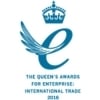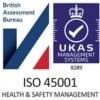Metal casting is an incredibly versatile and flexible process that can be used for a huge range of applications. At MRT, we’re proud to produce parts for a wealth of industries - from medical and aerospace, right through to defence and electronics.
Whilst most aluminium castings are used in the ‘as cast’ condition, there are certain applications that require enhanced mechanical properties, or different properties that the ‘as cast’ material can’t provide. These requirements often reflect the demanding environments where our customers’ components operate, as well as the complex performance standards they must consistently achieve.
Final applications can be extremely diverse – and as a result, every casting project will have its own requirements to suit the component needed. For example, special characteristics might include the performance of the metal, such as its ductility, hardness and abrasion resistance. By understanding these priorities from the start, we’re able to advise on the most effective approach to material conditioning.
Many characteristics can be added to metal by applying a heat treatment process after casting.
A series of extreme heats and fluctuations (or lack of) can improve the metallurgical properties of the material to produce the effect needed. These controlled thermal cycles enable us to fine-tune the behaviour of the alloy, ensuring the finished casting is just right for its intended function.
Here’s three of the heat treatment methods that we use to provide the perfect casting - time after time, no matter the application in mind.
1. Quenching
Quenching is arguably the most common heat-treating method – it’s often the first process that people think of when they envision metal working. It operates by quenching red hot metal into oil/water to rapidly cool it – changing the metallic structure. This process makes most metals much harder and more abrasion resistant than before. However, it also makes the material much more brittle – so if strength is a priority for the final component, an alternative or additional heat treatment process will need to be considered.
2. Annealing
Annealing is most likely a term that you would have come across when hearing about metal work. It works by heating up the material to close to its melting point and then allowing it to cool naturally, relaxing the structure of the metal and making it less brittle.
Annealing is usually applied after quenching to retain hardness but release the internal stresses.
By relieving these stresses, annealing helps ensure the casting performs reliably throughout its lifecycle – which is especially important for components exposed to mechanical load or thermal variation.
3. Age Hardening
Age hardening is a technique where heat is applied to the casting for a long time (as long as 20 hours). It’s a complicated process that, in simple terms, blocks the molecule’s ability to dislocate freely – resulting in much less ductile material and much higher yield strength.
Age hardening is invaluable when a component requires consistent high strength without compromising on dimensional stability, making it a widely used technique across many of the sectors we support.
Heat treating all metals, including aluminium, is a balancing act.
As a material's hardness increases, its ductility and malleability decrease and vice versa. This is why choosing the right heat-treatment process is a strategic decision, guided by how the component will be used and the capabilities that matter most.
At MRT, our design engineers will work with you to calculate your material’s requirements and discover the best route forward, without risk. We’ll ensure production of repeatable castings, optimised for the performance requirements of your specific application.
Our collaborative approach ensures every casting is engineered not just to meet specification, but to deliver the dependable, long-term reliability that will secure your project’s success.
MRT’s technical team have been designing successful cast components for decades. To find out how we partner with your product designers to optimise your concept for manufacture, read on here.








